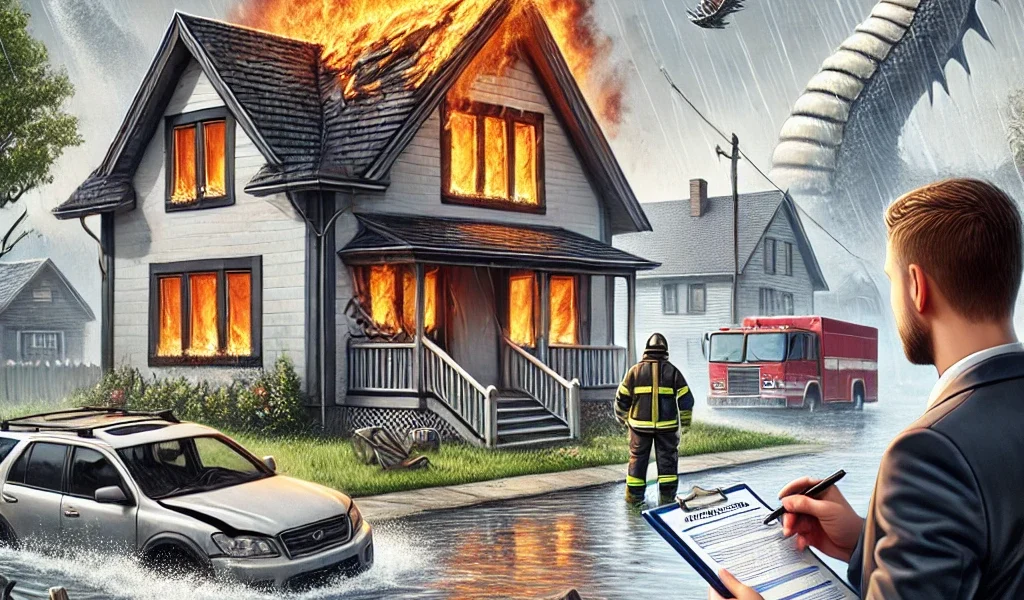Natural disasters like hurricanes, earthquakes, wildfires, and floods can cause massive destruction, leading to a surge in insurance claims. Understanding how these disasters affect the insurance claims process can help policyholders navigate their claims efficiently and maximize their payouts.
This DIY guide will walk you through how natural disasters impact insurance claims, the challenges involved, and strategies to ensure a smooth claims process.
1. The Immediate Aftermath: Understanding the First Steps
What Happens After a Natural Disaster?
Once a disaster strikes, insurers receive an overwhelming number of claims, which can slow down the claims process. Policyholders must act quickly and follow proper procedures to ensure their claims are processed efficiently.
First Steps to Take:
- Ensure Safety First: Prioritize personal safety and evacuate if necessary.
- Assess Damage: Conduct a preliminary assessment of the damage and take photos.
- Contact Your Insurer: Notify your insurance provider as soon as possible.
- Review Your Policy: Understand your coverage limits, deductibles, and exclusions.
- Document Everything: Keep records of damaged property, repair estimates, and related expenses.
✔ Pro Tip: Filing your claim early can help you avoid delays as insurers deal with a high volume of claims after a disaster.
2. How Natural Disasters Affect Insurance Claims
Surge in Claims Volume
- A sudden influx of claims can overwhelm insurers, leading to longer processing times.
- Some insurers may prioritize claims based on severity and urgency.
Increased Scrutiny and Adjustments
- Insurance adjusters may be overloaded, causing delays in inspections and claim evaluations.
- Some claims may be disputed if damages are not clearly linked to the disaster.
Policy Limitations and Exclusions
- Flood and Earthquake Coverage: Standard homeowners insurance often excludes floods and earthquakes; separate policies are required.
- Wind and Storm Damage: Coverage may vary depending on policy terms.
- Replacement Cost vs. Actual Cash Value (ACV): Insurers may pay based on ACV, considering depreciation, unless you have replacement cost coverage.
✔ Pro Tip: Keep a copy of your insurance policy in a safe place or digitally accessible for easy reference after a disaster.
3. Filing a Natural Disaster Insurance Claim
Step-by-Step Guide to Filing a Claim:
- Notify Your Insurer: Call or file your claim online as soon as possible.
- Document the Damage: Take clear, high-quality photos and videos of all affected areas.
- List Damaged or Lost Items: Create a detailed inventory with estimated values.
- Secure Temporary Repairs: Prevent further damage by making necessary repairs, but keep receipts for reimbursement.
- Meet with the Adjuster: The insurer will send an adjuster to inspect the damage and assess the claim.
- Review the Settlement Offer: Ensure the offer covers all damages before accepting.
✔ Pro Tip: Get independent repair estimates to compare with the insurer’s offer to ensure fair compensation.
4. Challenges and Delays in Claim Settlements
Common Challenges:
- Slow Response Times: High claim volume leads to processing delays.
- Undervalued Claims: Some insurers may offer lower settlements than expected.
- Denials Due to Policy Exclusions: Damage from uncovered events may result in claim denial.
How to Overcome Delays and Challenges:
- Stay Persistent: Follow up regularly with your insurance provider.
- Keep Records: Maintain detailed documentation of all communications.
- Consider Hiring a Public Adjuster: If your claim is undervalued, a public adjuster can negotiate on your behalf.
- Appeal a Denied Claim: If unfairly denied, request a written explanation and gather supporting evidence to appeal.
✔ Pro Tip: Know your rights—state laws regulate how insurers handle claims, and you can escalate disputes to insurance regulatory authorities if necessary.
5. Special Considerations for Different Types of Natural Disasters
Hurricanes and Storms:
- Wind damage may be covered, but flood damage requires separate flood insurance.
- Some states have separate deductibles for hurricane-related claims.
Earthquakes:
- Homeowners insurance does not cover earthquakes; separate earthquake insurance is needed.
- Structural and foundation damage assessments may take longer due to complexity.
Wildfires:
- Many policies cover fire damage, but exclusions may apply for high-risk zones.
- Temporary housing costs may be covered if the home is uninhabitable.
Floods:
- Standard policies exclude flood damage; separate National Flood Insurance Program (NFIP) or private flood insurance is needed.
- Flood claims can take longer due to extensive damage assessments.
✔ Pro Tip: Check if you live in a high-risk area and ensure you have the right coverage before disaster strikes.
6. Preparing for Future Natural Disasters
Proactive Measures to Protect Your Home and Claims Process:
- Review Your Policy Annually: Ensure you have adequate coverage for natural disasters.
- Keep an Updated Home Inventory: Maintain a list of valuable possessions with receipts and photos.
- Store Important Documents Safely: Keep digital copies of insurance policies and claim documents.
- Strengthen Home Resilience: Upgrade roofing, reinforce windows, and elevate utilities to minimize damage risk.
✔ Pro Tip: Ask your insurer about disaster preparedness discounts for implementing safety measures.
Final Thoughts
Natural disasters can wreak havoc on homes and finances, making insurance claims essential for recovery. By understanding how disasters impact claims, knowing the challenges involved, and taking proactive steps, you can ensure a smoother claims process and maximize your compensation.




